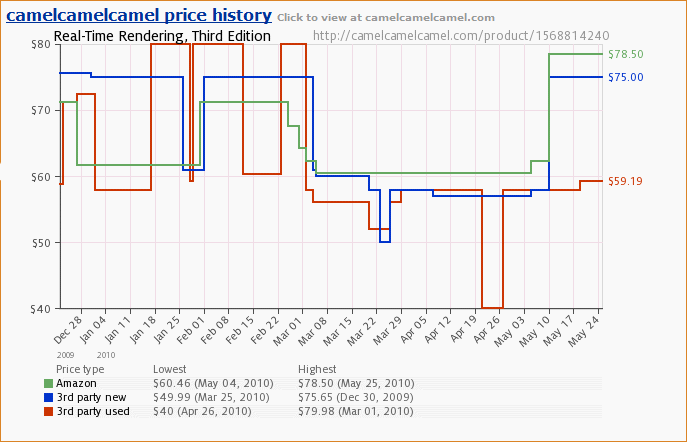I don’t often go to SIGGRAPH panels, but this year’s list includes three that look very tempting. Here they are, sorted by date:
Future Directions in Graphics Research
Sunday, 25 July, 3:45 PM – 5:15 PM
The SIGGRAPH website description says, “This panel presents the results of an NSF-funded workshop on defining broader, fundamental long-term research areas for potential funding opportunities in medical imaging and device design, manufacturing, computational photography, scientific visualization, and many other emerging areas in graphics research.” It’s important to know where the funding is going into computer graphics research, and what the researchers think the most promising future directions are. The panelists include some of the most prominent and influential computer graphics professors: Jessica Hodgins from Carnegie Mellon, James Foley (first author of “Computer Graphics: Principles and Practice”) from Georgia Tech, Pat Hanrahan (who probably has his name on more SIGGRAPH papers than anyone in the world) from Stanford University, and Donald P. Greenberg (whose list of former students would make a great first draft for a “who’s who” of computer graphics) from Cornell.
CS 292: The Lost Lectures; Computer Graphics People and Pixels in the Past 30 Years
Monday, 26 July, 3:45 PM – 5:15 PM
This is a unique idea for a panel – in the 1980’s, Ed Catmull and Jim Blinn taught a hugely influential course on computer graphics. Among many others, it inspired Richard Chuang who went on to found PDI. While teaching the course, Ed Catmull was building Lucasfilm’s computer graphics group, which later became Pixar. The panelists are Ed Catmull and Richard Chuang, who according to the website description “use video from the course to reflect on the evolution of computer graphics – from the genesis of Pixar and PDI to where we are today.” Catmull in particular is an amazing speaker – this looks well worth attending.
Large Steps Toward Open Source
Thursday, 29 July, 9:00 AM – 10:30 AM
Several influential film industry groups have open-sourced major bits of internal technology recently. This panel discusses why they did it, what were the benefits and where were the challenges. This is definitely relevant to the game industry – would it make sense for us to do the same? (Insomniac is already leading the way – I wish they had a representative on this panel). Panelists include Rob Bredow (CTO of Sony Pictures Imageworks, which has recently launched several important open source initiatives), Andy Hendrickson (CTO of Walt Disney Animation Studios, which has recently done the same, most notably including the Ptex texture mapping system), Florian Kainz (Principal R&D Engineer at Industrial Light & Magic and the key individual behind OpenEXR, which ILM open-sourced in 2003), and Bill Polson (Lead of Production Engineering at Pixar Animation Studios). Pixar doesn’t currently have any open-source initiatives that I know of – does Bill’s participation mean that they are about to announce one?
